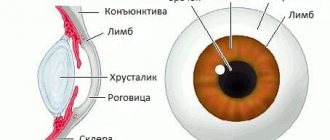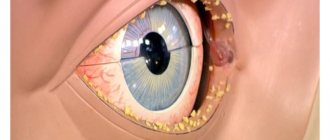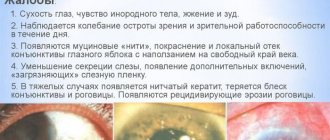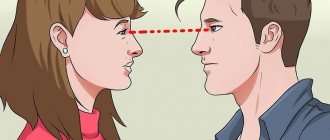Answering a child’s question about why the Chinese have narrow eyes, one could easily dismiss it: precisely because the earth is round, the grass is green, and the hare has long ears. Are differences between people really that important? We are all different, nature (or, if you prefer, God) created us that way. But the human mind tries to find logic in everything, and this is quite natural.
Perhaps Chinese children attack their parents with equally challenging questions, wondering why Europeans have too white skin, blue eyes or red hair. Let's try to explain the mysteries of genetics from the point of view of science, science fiction and folklore.
Epicanthus is a distinctive feature of the eye structure
There is a misconception that the eye size of Asians is much smaller than that of the indigenous inhabitants of other continents. In fact, the Koreans, Vietnamese, Japanese and Chinese are in no way inferior to the rest of humanity by this criterion. The only difference is that their eyes are often located on the face with a slight slope, that is, the inner edge is slightly lower than the outer, and the upper eyelid is equipped with an epicanthic fold that almost completely covers the tear duct. In addition, Asians, unlike Europeans, have a dense layer of fat under the skin of the eyelids, so it seems that the area around the eyes is somewhat swollen, and the incision resembles a thin slit.
Dispelling Myths: 9 Stupid Stereotypes About Asians
Recently there has been an increase in interest in the East and Asian culture. But this fact does not prevent the fact that prejudices that are far from the truth still live in our minds. We decided to debunk the most common and ridiculous myths about Asians.
All Asians look the same
In fact, the situation here is the opposite: it is much more difficult to distinguish a Frenchman from a Belgian than a Korean from a Japanese. Asians have a very noticeable difference in appearance among different nationalities. You can also see visual differences between people of the same nationality. For example, Northern Chinese are considered to be tall and fair-skinned, while Southern Chinese are short and darker-skinned.
They are yellow
This is not true at all. We are taught incorrectly at school. When teachers talk about races, Mongoloid representatives are called yellow-skinned, which is far from the truth. Does the Asian look like someone from The Simpsons? Hardly.
Their skin color is no different from Europeans. Then why does everyone think otherwise? This stereotype has been around for many years, since it appeared in the 18th century. Then scientists divided all people into races.
The northern peoples were classified as the white race, the southern ones as the dark race, and the Asians became an intermediate race, which was called the yellow race.
Yellow was considered a cross between black and white.
If you really believe this, how then can you explain that one of the tallest people in the world, Bao Xishun (height 236 centimeters), is Chinese? Yes, it’s true that most Asians used to be short. And even now there are short people. The reason for short stature is diet, because the less animal protein a person eats, the less he grows. Today the situation has changed. The diet of Asians has changed, so you don’t have to be afraid that when you arrive in Asia you will become Gulliver in the land of Lilliputians.
They have narrow eyes
And a little more about appearance. We don’t think it’s worth saying that calling Asians “narrow-eyed” is absolutely unethical. But we’ll tell you why they think so and why it’s not true. At first glance, Asians' eyes actually look narrower than those of other races. But this is just an optical illusion. The eye socket itself is even larger in Mongoloids than in Caucasians.
But Asians have the so-called “Mongoloid fold of the upper eyelid,” which fills the “empty” space of the orbit.
Since we are accustomed to a different ratio of the sizes of the eye and orbit, we have the illusion that Asians have narrower eyes.
Yes, they do often eat rice - but not always and not everywhere. Rice is to them like bread to us. They have been accustomed to eating this product since childhood. But it's still a matter of taste. Some people eat rice all the time, some only with certain dishes, and some don’t like it at all. In general, Asian cuisine is known for its diversity. Yes, yes, it's not just rice, noodles and rolls.
They eat dogs and cats
Yes, this is more a fact than a stereotype. But if earlier this practice was widespread in South Korea and China, today’s youth are actively protesting against it. And now they are even opening contact cafes with dogs.
Now dog dishes are just an old custom.
The meat of these animals can only be found in expensive establishments, and it is in demand among middle-aged, wealthy Asians who respect ancient customs.
All Asians know kung fu
Yeah of course. Every Asian can fight like Jackie Chan. Yes, kung fu is an important part of Asian culture. Yes, we cannot imagine any oriental action movie without techniques from Asian martial arts. But this does not mean that everyone goes to study wushu. Many people are simply not interested. Although this does not negate the fact that there are more practitioners of martial styles in Asia than, for example, in America.
If all Asians are bad drivers, how do they get around? This misconception came to us from America. There are several reasons for the appearance of the stereotype: the lack of driving experience of Asians in general and some studies that prove that a large number of accidents occur in Asia. Yes, in many countries of the East cars really appeared later than in the West, but not everywhere.
So this is the exception rather than the rule.
There are many other studies that say that people in Asia drive cars more carefully than, for example, in Australia. If you still don’t believe that Asians are good drivers, watch the movie “The Fast and the Furious: Tokyo Drift,” which talks about the Japanese racing subculture. By the way, it was in Japan in the 1960s that drifting was born - fast cornering in a controlled drift.
All Asians are math geniuses
Again, there are studies that prove that the average IQ of Asians is higher than the rest. But this does not mean that all of them are smart and that in Asian countries there are no people with low IQ at all. Research also shows that Asian students are superior to all other students in mathematics. But this does not depend on race, the secret is only in the teaching method.
This fact also does not exclude the fact that not everyone is good at mathematics. The stereotype was imposed by America and is still maintained. We are sure that you have seen the typical image of an Asian in TV series and films more than once - a genius who understands the exact sciences, or an excellent student who aims to go to Harvard. For example, the heroine Mouse from the series “The Carrie Diaries” immediately comes to mind.
Source: https://www.ellegirl.ru/articles/razveivaem-mifyi-9-duratskih-stereotipov-ob-aziatah/
Evolutionary processes
Scientists, answering the question of why the Chinese have narrow eyes, refer to changes in the structure of the visual organ during evolution. You probably know what race the Chinese belong to - most Asian peoples are Mongoloids by race.
The harsh climate of the area where this ethnic community arose 12,000–13,000 years ago influenced the physical characteristics of the people. Nature has taken care to protect the eyes from strong winds, sandstorms, and bright sunlight. People's vision was not affected at all by this, but the Japanese and Chinese do not need to squint, protecting their eyes from the effects of adverse natural factors.
By the way, not all Asians like the peculiar structure of their eyes. According to statistics, over the past few years, more than 100 thousand Chinese have undergone surgery in an attempt to give their faces European features. It is interesting that not only the fair sex, but also men go under the knife. To the Europeans themselves, such transformations seem strange, because the narrow eye shape is a kind of “highlight” of the Chinese, this is what attracts attention.
Why do the Chinese have narrow eyes?
It is difficult to answer this question unambiguously, as well as why the moon is yellow or the watermelon is striped. There are many hypotheses on this matter. Let's try to solve the genetic mystery.
Asians' eyes are not so small; this visual perception is created due to the fact that they are located with a certain slope, and the upper eyelid has a characteristic structure in the form of an overhanging fold (epicanthus). The strong fatty layer surrounding the eyelids creates some swelling, also visually narrowing the incision, the eyes look like slits. This is a feature of the Mongoloid race, which includes the Chinese.
If you look at the origins, you will notice that the physiological characteristics have been refined over thousands of years and have a simple dependence on the natural conditions of the environment. Narrow eyes protected their owners from sandstorms, strong winds, and bright sun. Nowadays, this feature is perceived by many as a kind of “zest” that Nature itself endowed the Chinese with.
Descendants of the Dragon
It is known that the Chinese themselves consider themselves children of the dragon - this mythical animal is the symbol of the Celestial Empire. According to legend, one of the ancestors of the Chinese people was a young man named Yan-di - the son of an earthly woman and a heavenly dragon. If you believe ancient legends, at the dawn of civilization, Chinese girls more than once became objects of desire for fiery, underground and flying dragons.
From these marriages, of course, children were born. Unfortunately, we don’t know what real dragons looked like. But it can be assumed that it was their genetic code that left its mark on the appearance of the modern peoples inhabiting East Asia. Perhaps it is the kinship with dragons that explains why the Chinese have narrow eyes, short stature and yellow skin?
Who is taller
Of the group under consideration, the Korean is tallest. The Chinese are much smaller in height, even squat, and many have a frail physique. The Japanese are a little taller, stronger and healthier. Many researchers attribute the reason to the daily diet of the troika. Koreans love meat, just like Mongolians. Just as you cannot force a Mongolian or a Korean not to eat meat, the Chinese and Japanese cannot be forced to eat seafood. This is understandable; the Mongolian lifestyle, as a nomad, fixed this gastronomic addiction almost at the genetic level. What about other Asians, what are the differences with Mongolian predilections? After the scientific community presented disappointing research results regarding their nutrition and growth, differences in nutrition with the latter began to gradually disappear. They also began to actively introduce meat products into the diet, so their height has increased noticeably in the last half century - by 10-15 cm. Now an outsider is unlikely to notice the difference in height between these nationalities. It remains to compare according to other criteria.
People from other planets
Despite all scientific achievements, an absolutely reliable version of the origin of humanity has not yet been developed. Some believe in the divine creation of the world, while others are closer to the Darwinian theory, which claims that our closest relatives are monkeys. The hypothesis also has a right to exist that the diversity of earthly races and nationalities is due to the fact that the Earth is a refuge for people from other planets or galaxies.
Assuming that this is indeed the case, one could understand the nature of many incomprehensible mysteries. Why do the Chinese have narrow eyes? It's simple - in the corner of the Universe where they came from, everyone is like that. It is quite possible that at different times our land was visited by giants who built pyramids in Egypt and placed stone idols on Easter Island. But you never know how many unknown secrets our planet holds! The narrow eyes of the Chinese seem like nothing in comparison.
Epicanthus - what is it? Causes of the defect, treatment features
Epicanthus - what is it? The definition is usually understood as a vertically located fold in the form of a hemisphere, which covers the angular part of the palpebral fissure. Normally, the manifestation is typical for representatives of the Mongoloid race. In people of Caucasian appearance, the epicanthus fold is considered an anomaly.
Reasons for appearance
The prerequisites for the development of the defect have not been determined to date.
In this case, how is epicanthus formed, what is it? It is generally accepted that the characteristic fold in the eyelid area acts as a protective apparatus that arises in response to the need to protect the eyes from wind, dust, and exposure to solar radiation. Thus, the manifestation is identified as an opportunistic trait, characteristic of people who have been in certain climatic conditions for a long time.
Experts have proven the connection between the severity of the epicanthus and the shape and position of the bridge of the nose. The higher the latter, the smaller the size of such a fold. However, a low-set bridge of the nose does not always form an epicanthus, photos of which are presented in this material. The occurrence of this defect also depends on the thickness of the layer of subcutaneous fat in the area of the upper eyelid.
The extent of the anomaly
Most often, the formation of epicanthus is observed among the peoples that inhabit East, Central and Northern Asia. These are, first of all: Yakuts, Kazakhs, Tatars, Altaians, Kyrgyz. Epicanthus is also characteristic of the indigenous people of America. As noted above, for the Caucasian race such a skin fold is considered a deviation from the norm.
If the anomaly is clearly expressed, a person may experience the following manifestations:
- narrowing of the skin gap of one or both eyes;
- changing the position of the edge of the eyelashes;
- trauma to the cornea of the eye;
- impaired eyelid closure;
- worsening of the outflow of tears.
Possible postoperative consequences and complications
A patient who resorts to surgical removal of epicanthus needs to be aware of possible postoperative manifestations:
- the occurrence of a persistent subcutaneous hematoma;
- dry skin in the eyelid area;
- development of conjunctivitis;
- increased lacrimation;
- burning sensation on the mucous membranes of the eyes;
- eversion of the upper eyelid;
- divergence and rupture of postoperative sutures.
Features of recovery in the postoperative period
Typically, after surgery to remove the epicanthus, patients are forced to endure tissue swelling in the palpebral fissure for about two weeks. As noted above, dryness, pain, and pain in the eyes are possible. In order to recover from surgery as quickly as possible and prevent complications from occurring, it is enough to follow these recommendations:
- Avoid skin irritation - avoid using cosmetics and contact lenses.
- Walk in the fresh air in calm weather, preferably at night. Try to avoid exposing the problem area to direct sunlight by wearing safety glasses with lenses that darken as much as possible.
- Use eye drops. The use of the latter eliminates dry eyes, relieves inflammation, and promotes the healing of damaged tissue.
- Stop reading books and watching movies for several weeks. Such actions can lead to eye strain, which is fraught with a whole host of unpleasant consequences.
- Completely eliminate alcohol consumption. Alcohol dilates blood vessels and causes tissue swelling. All this can cause postoperative sutures to diverge.
Eventually
So we figured out what the anomaly looks like and how it manifests itself, how epicanthus is treated, what it is.
In conclusion, it is worth noting that in most cases there are no direct medical indications for surgical removal of such a skin fold.
The majority of people susceptible to this phenomenon resort to surgery purely for cosmetic purposes. This solution allows you to give expressiveness to your look and acquire the so-called European eye shape.
We are all cut from the same cloth
Summing up the results of our not entirely scientific investigation, I would like to tell one very nice parable that explains the racial differences between peoples. Having decided to populate the planet with intelligent beings, the Creator fashioned figures of people from dough and put them in the oven for baking.
Either the Creator dozed off, or was distracted by other more important matters, but an unforeseen situation occurred: some of the figurines remained raw and white - this is how Europeans turned out, others were burnt - it was decided to send them to Africa. And only the Mongoloids came out yellow, strong, moderately baked - exactly as it was originally intended. And the fact that someone’s eyes are not large enough or their cheekbones are too wide is not a flaw, but God’s vision of beauty.
The meaning of this beautiful legend, imbued with good humor, does not aim to emphasize the superiority of some peoples over others. Of course, we are all different, but regardless of eye shape and skin color, we have equal rights and opportunities. Each of the peoples inhabiting planet Earth is unique in its own way. The external signs of individuals in comparison with the moral and cultural values of the ethnic group do not matter.
Causes of Aarskog syndrome
Although Aarskog syndrome is a clinically and genetically heterogeneous condition, the best characterized form of the disorder is inherited as an X-linked trait and is caused by changes (mutations) in the FGD1 gene. Aarskog syndrome primarily affects men. However, women who carry one copy of the FGD1 gene mutation (heterozygotes) may exhibit some of the symptoms associated with the disorder.
X-linked recessive genetic disorders are conditions caused by mutations in a gene located on the X chromosome. Women have two X chromosomes, but one of the X chromosomes is "switched off" to correct the imbalance, and almost all of the genes on that chromosome are silenced (inactivated) through a process called X inactivation.
Women who have a disorder that causes a mutation in one of their X chromosomes are carriers of the disorder. Female carriers typically do not show symptoms of the disorder because it is usually the X chromosome with the abnormal gene that is being silenced.
Men have only one X chromosome, and if they inherit an X chromosome that contains a disease gene, they will develop the disease. In turn, men with an X-linked disorder will pass on the disease gene to all their daughters, who will be obligatory carriers of this syndrome. Males cannot pass on X-linked traits to their sons because they always pass on their Y chromosome instead of their X chromosome to male offspring.
Women who are carriers of an X-related disorder have a 25% chance in each pregnancy of having a daughter who is a carrier (like themselves), a 25% chance of having a daughter who is not a carrier, a 25% chance of having a son affected by the disorder, and a 25% chance of having a daughter who is not a carrier. unaffected boy syndrome.
Features of recovery in the postoperative period
Typically, after surgery to remove the epicanthus, patients are forced to endure tissue swelling in the palpebral fissure for about two weeks. As noted above, dryness, pain, and pain in the eyes are possible. In order to recover from surgery as quickly as possible and prevent complications from occurring, it is enough to follow these recommendations:
- Avoid skin irritation - avoid using cosmetics and contact lenses.
- Walk in the fresh air in calm weather, preferably at night. Try to avoid exposing the problem area to direct sunlight by wearing safety glasses with lenses that darken as much as possible.
- Use eye drops. The use of the latter eliminates dry eyes, relieves inflammation, and promotes the healing of damaged tissue.
- Stop reading books and watching movies for several weeks. Such actions can lead to eye strain, which is fraught with a whole host of unpleasant consequences.
- Completely eliminate alcohol consumption. Alcohol dilates blood vessels and causes tissue swelling. All this can cause postoperative sutures to diverge.
What is epicanthus?
Epicanthus is a fairly common plant among residents of Central, Eastern and Northern Asia. Thanks to this, its second name is the Mongolian fold, which is present in all representatives of the nationality.
The exact causes of epicanthus are unknown. The main version of scientists is that the layer appeared in the form of an evolutionary adaptation of the visual organs to the action of unfavorable environmental factors. The fold effectively protects the eyes from wind, frost, dust, etc.
Epicanthus can be congenital or acquired. The second option appears at any age due to traumatic injuries to the eyelids. This causes a one-sided localization of the pathology, since the fold is formed due to scar tissue changes in the area of damage.
What is epicanthus
Congenital subcutaneous layer occurs on both sides and can be of two types:
- Reverse epicanthus in a child. Develops on the lower eyelid.
- Straight epicanthus. Localized in the area of the upper eyelid. It starts from the eyebrow, goes down to the lower eyelid and covers the inner corner of the eye.
Congenital vertical fold is a cosmetic defect. In some cases it is barely noticeable and does not attract much attention. With racial predisposition, the subcutaneous layer is quite large and is present in all representatives of the nationality, without exception.
A massive vertical fold leads to a narrowing of the palpebral fissure and a decrease in the viewing angle. The outflow of tears worsens, and the eyelids do not close completely. If the normal position of the ciliary edge changes, damage to the cornea is possible.
To make a diagnosis, just look at the patient. This does not require the use of additional examination methods.
The fat fold is most often found in children, since their subcutaneous fatty tissue is quite pronounced. Before reaching school age, it completely disappears or becomes almost invisible.
Elderly people do not have this problem, which is due to the absence of a thick layer of subcutaneous fat. Vertical folds will disappear faster in a thin person than in a fat person.
Epicanthus can develop due to the physiological characteristics of a person or as one of the manifestations of a serious disease. A pathological fold accompanies the following ailments:
- Down syndrome and other chromosomal pathologies;
- drooping lower eyelid;
- blepharophimosis.
Epicanthus can serve as a symptom of Down syndrome and alcohol syndrome in children











